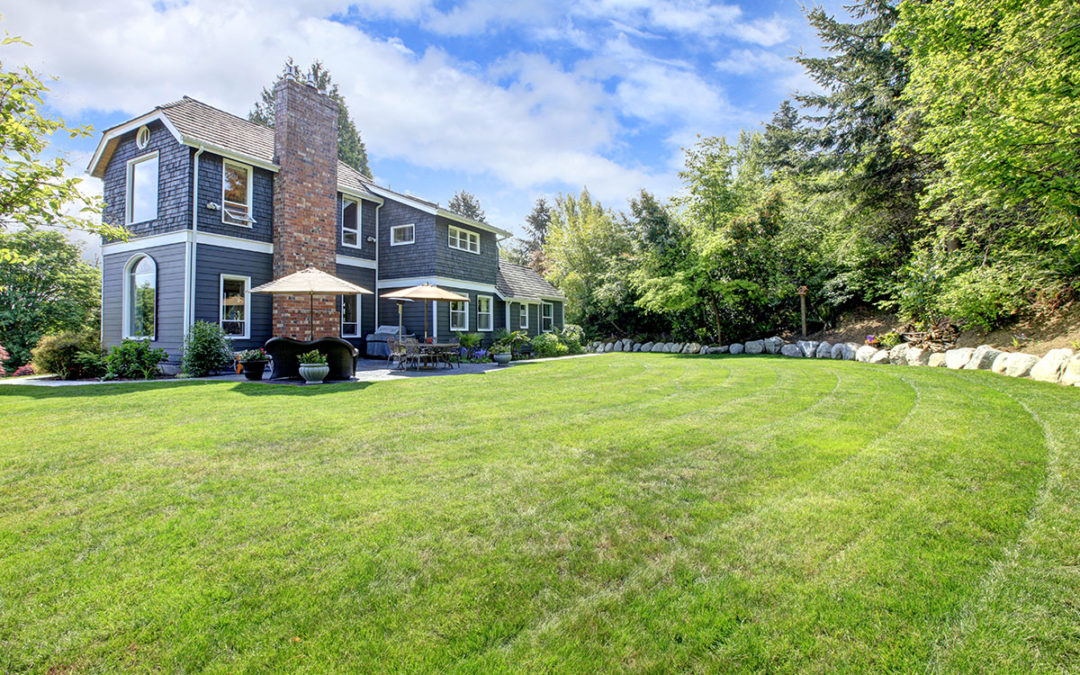Moving into a home requires new homeowners to get acquainted with many new things – neighbors, schools, stores, creaks and noises the house makes, and the requirements for caring for your new lawn and landscape. TurfMutt, OPEI’s environmental stewardship program, shares these tips to help new homeowners become backyard ready and make the most of their outdoor living room.
Assess the Existing Living Landscapes
Take a look at what currently exists in the yard to determine what you love about it and what you’d like to change. Don’t be afraid to ask the previous owner about the plantings. They might be able to provide a list of landscape items to make the job easier. Ask your Realtor to help facilitate this, if needed. Your Realtor can also put you in touch with local experts who can help you create the outdoor living room of your dreams.
Plan for Outdoor Living
Determine what will work with the existing living landscape for your entire family, including kids and pets. Take into account your family needs and lifestyle. Then, research options for enhancing your family yard with hardy turfgrass, climate-appropriate plants and a mix of adaptive and native plants to foster biodiversity. Plant to preserve your corner of the ecosystem with a good mix of grass, trees, shrubs and flowering plants to support our pollinator friends: birds, bees and butterflies. Nature starts at your backdoor!
Plant with Your Pets in Mind
If you have a turfgrass lawn, you’ve got a playground for your kids and your pets. However, you should know there are many types of grasses – and some are better than others for pets, especially dogs. Also, if your yard has artificial or synthetic grass, you’ll want to replace it with real turf. Plastic grass is bad for the environment, hard to keep clean, and can get too hot for your pet’s paws and your children’s feet. And, remember, avoid toxic plants that can be harmful to pets (see the ASPCA’s list of toxic and non-toxic plants for tips).
Prep for Dog Fun
A new home gives you the chance to go above and beyond to make your family yard a place full of fun for your furry friend. Set up an area for your dog to dig, such as a digging box or digging bed. Add chew toys in the dirt (leave one poking out) to help our dog get the idea. A canine obstacle course can provide hours of fun if you have the space available to install one. You can also add a water feature for your pet to splash in on hot days. A water station is another good addition that enables your pet to stay hydrated year-round. A tree or bush can provide a shady spot for your pet to rest.
Remember: Right Plant, Right Place
When you’re ready to dig in and plant in your family yard, remember the “Golden Rule” of living landscapes: put the right plant in the right place. Select plants that will thrive in your climate zone. The microclimate in your new neighborhood may be very different from the one you just moved from – even if you didn’t relocate a great distance. Familiarize yourself with your plant hardiness zone on the USDA Plant Hardiness Zone Map to determine what types of turf, trees, shrubs and plants will thrive in your new location. Still unsure what to plant? Consult a local nursery or landscape professional for advice (ask your Realtor for recommendations if needed).
Learn About Restrictions and Rules
Some neighborhoods with home owners associations (HOAs) have restrictions about what you can and cannot plant in your yard. Other communities may have watering limitations during part of the year requiring a smart irrigation system. Become familiar with the rules so you can plan accordingly.
Conduct an Outdoor Power Equipment Inventory
The power equipment you needed at your previous home may not suffice at the new property, or perhaps it’s time to upgrade your equipment to better suit your needs. Take an inventory of your existing outdoor power equipment (lawnmower, leaf blower, etc.) and match it against the needs of your new family yard. At the very least, now’s also a good time to get your outdoor power equipment serviced for the upcoming season.
Brush Up on Lawn Equipment Safety
Get backyard ready for your new lawn by reviewing your owner’s manuals and brushing up on safety procedures. Follow all guidelines for outdoor power equipment and familiarize yourself with the controls. Misplaced manuals can be found online (and saved on your computer for future reference). Also, set expectations with your family and pets. When outdoor power equipment is in use, the safest place for kids and pets is inside your home and under the supervision of a responsible adult. Before your first yardwork day, talk with your family about safety and remind them to follow procedures.
Be Smart About Maintenance
When you move into a new home, it’s a good opportunity to revisit the basics of lawn and garden maintenance. Remember not to overwater your living landscapes. Plants and trees will grow stronger and work harder, creating deeper, vertical roots, if they need to seek water. Also, consider “grasscycling” instead of bagging your lawn clippings when you mow. Grasscycling is an easy (and organic!) way to give your lawn a nutritional boost. Cut grass blades left on the lawn will decompose quickly and return nutrients to the lawn. An added bonus? You save the cost of bagging and you avoid adding more waste to the landfills.
Your family yard is an outdoor living room, providing a respite from stress, offering an outside entertainment area, expanding your living space, and giving kids and pets a safe place to play. In addition to enhancing your lifestyle and providing a center of health and relaxation, the family yard is also beneficial to the environment. The living plants in your family yard capture and filter rainwater, produce oxygen and absorb carbon. Your yard also provides valuable wildlife habitat and supports pollinators. Finally, the outdoor living room at your home boosts curb appeal, improves your property value and reduces crime. For more about the benefits of the family yard and getting backyard ready talk to TurfMutt. Visit TurfMutt’s blog.

